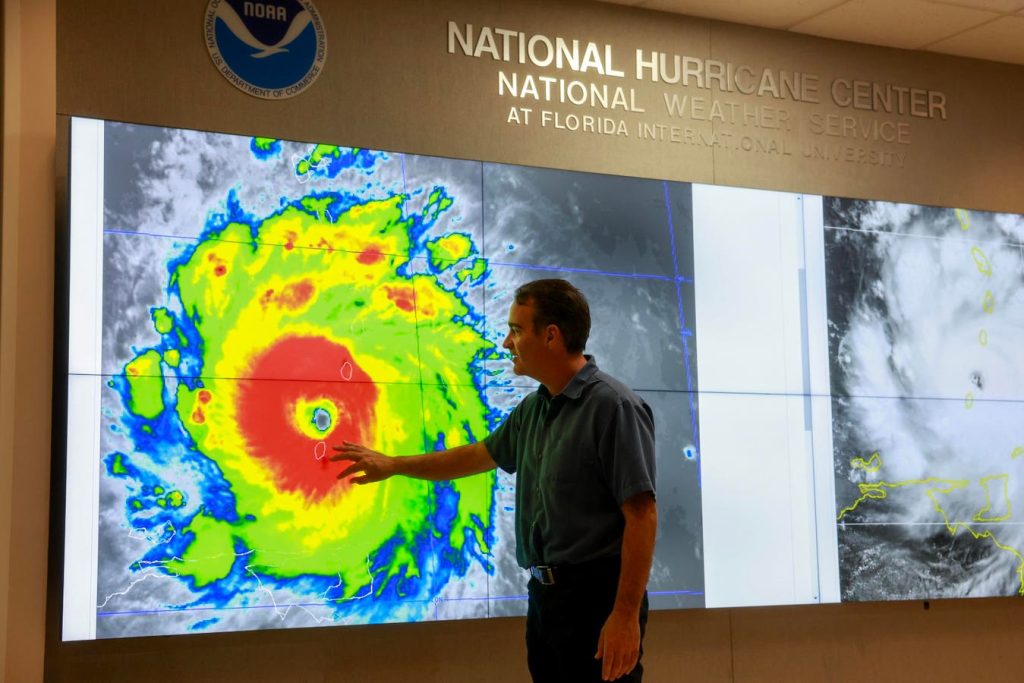Hurricane Beryl’s danger lies in its combination of high wind speeds, heavy rainfall, and the potential for severe flooding and storm surges. According to CNN, Beryl rapidly intensified to a Category 4 storm, with sustained winds exceeding 130 mph. The National Hurricane Center (NHC) warned of life-threatening flash floods and mudslides, particularly in areas with mountainous terrain.
Rapid Intensification and Climate Change
The phenomenon of rapid intensification, where a storm’s wind speeds increase by at least 35 mph within 24 hours, has been linked to climate change. Warmer sea surface temperatures provide more energy for storms, leading to quicker and stronger development. Beryl’s intensification is a stark example of this trend. Climate scientist Michael Mann explains, “The unusually warm waters of the Caribbean are a key factor in Beryl’s rapid intensification. These warm waters are a direct consequence of global warming”.
Additionally, increased atmospheric moisture from warmer air temperatures can lead to more intense rainfall during such storms. This additional moisture not only fuels the storm but also increases the potential for catastrophic flooding. According to a study by the National Oceanic and Atmospheric Administration (NOAA), the increase in frequency and intensity of extreme weather events is directly correlated with rising global temperatures and altered weather patterns. This creates a feedback loop where warmer temperatures lead to stronger storms, which in turn cause greater destruction and contribute to further climate change impacts.
Comparison to Other Superstorms
Hurricane Beryl’s behavior is reminiscent of other devastating storms influenced by climate change. Hurricane Katrina (2005) and Hurricane Maria (2017) both underwent rapid intensification before causing catastrophic damage.
- Hurricane Katrina: In 2005, Katrina rapidly intensified over the Gulf of Mexico’s warm waters, reaching Category 5 status before making landfall. The storm caused over 1,800 deaths and $125 billion in damage, primarily due to storm surge and levee failures in New Orleans.
- Hurricane Maria: In 2017, Maria rapidly intensified to a Category 5 storm as it approached Puerto Rico. Maria’s powerful winds and heavy rains caused widespread destruction, resulting in nearly 3,000 deaths and leaving the island without power for months. Parts of Puerto Rico are still recovering from Maria’s impacts.
The Growing Threat of Climate-Driven Superstorms
As climate change continues to warm the oceans and atmosphere, the frequency and intensity of superstorms like Beryl, Katrina, and Maria are expected to increase. The World Economic Forum’s Global Risks Report 2024 identifies extreme weather events as one of the top three climate-related risks facing humanity. The report emphasizes the need for comprehensive climate action to mitigate these risks and protect vulnerable communities. Greg Case, CEO of Aon, highlights the importance of building resilience: “Amidst increasing volatility and complexity, there is a significant opportunity for organizations to become more resilient to the climate and catastrophe risks highlighted in our report”.
Hurricane Beryl’s rapid intensification and potential for severe damage underscore the growing threat of climate-driven superstorms. As we face an increasing number of these powerful storms, it is essential to invest in resilient infrastructure, improve early warning systems, and take decisive action to combat climate change. Understanding the connections between climate change and storm behavior will be crucial in preparing for and mitigating the impacts of future hurricanes.
For more detailed information on Hurricane Beryl and its impacts, as well as to track other storms this season, you can stay up to date with NOAA’s Hurricane Tracker.
Read the full article here









